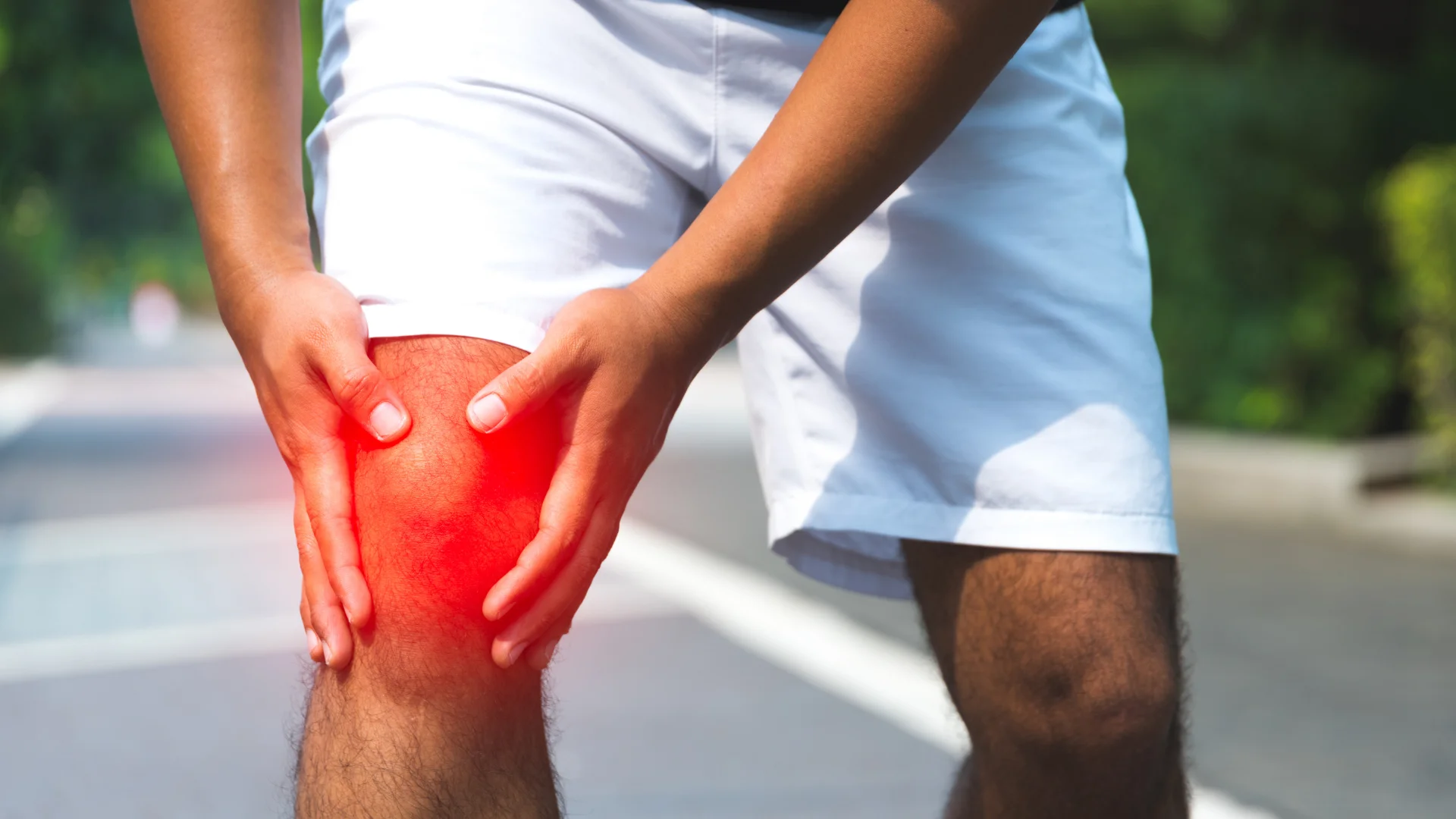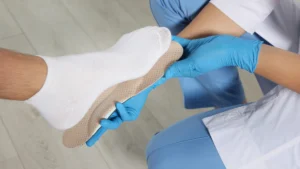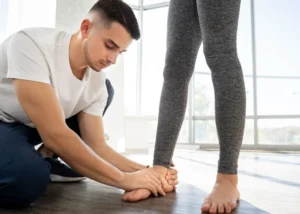Feet play a significant role in your overall mobility and posture, and any misalignment or issues can lead to discomfort in your knees, hips, or back. You may be unknowingly ignoring signs that your feet could be at the root of your pain. This article explores five key indicators that suggest your foot health is impacting other areas of your body, and how custom orthotics can offer relief and support for better alignment and function.
Understanding the Connection Between Feet and Joint Health
Your feet are the foundation of your body, and any misalignment or dysfunction can lead to a cascading effect on your joints. When your feet don’t function properly, they can change your gait and posture, putting undue stress on your knees, hips, and back. This interconnectedness can manifest in pain and discomfort, impacting your daily activities and overall quality of life.
The Role of the Foot Arch in Body Mechanics
The foot arch is important for shock absorption and weight distribution. A collapsed arch can result in excessive strain on your ligaments and muscles, impacting your spine alignment and overall biomechanics. This instability can lead to chronic discomfort and mobility issues if not addressed through proper support and orthotics.
A strong, well-defined arch provides critical support to your entire body. Research indicates that individuals with flat feet or high arches often experience higher rates of joint problems. When your foot arch collapses, it causes the foot to roll inward excessively, known as pronation. This misalignment can create a chain reaction: as the knees compensate for the imbalance, they may become misaligned, subsequently affecting your hips and lower back. Orthotic insoles can provide the necessary support to restore the proper arch function and alleviate the mechanical stress caused by these foot issues.
Understanding Foot Mechanics
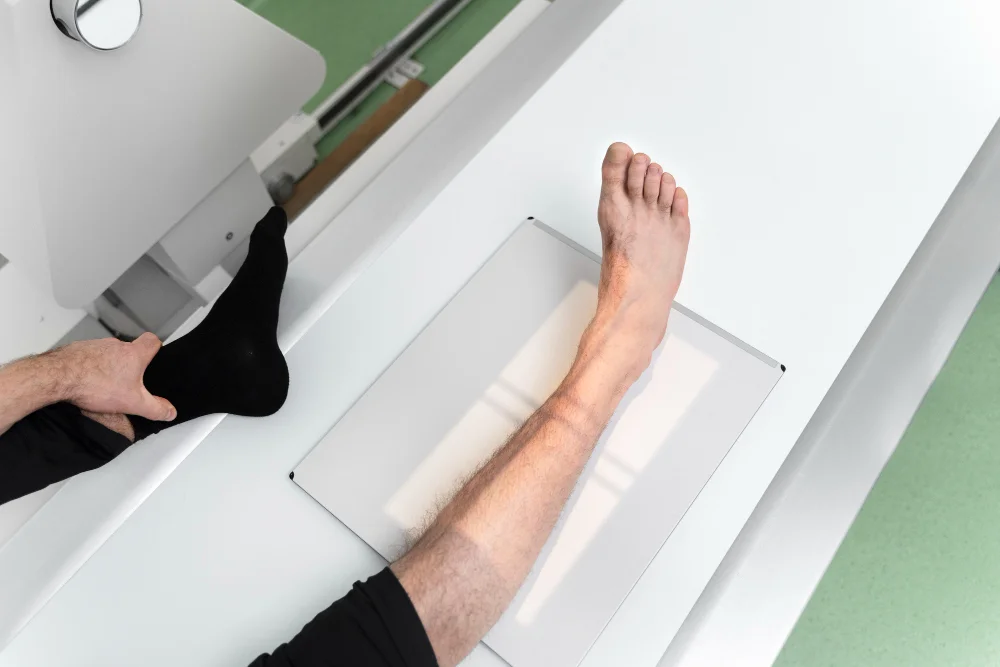
Your feet bear the weight of your entire body and are fundamental to your overall movement. Understanding foot mechanics involves recognizing how your foot structure affects your gait and alignment. Even minor alterations in the way you walk due to foot mechanics can create a ripple effect, impacting your knees, hips, and back. This insight emphasizes the interconnectedness of your body’s systems and highlights the importance of addressing foot problems early on.
The Importance of Foot Structure
Foot structure shapes your balance and posture. A well-aligned foot distributes your body’s weight evenly, translating into efficient movement. Flat feet or high arches, for instance, can disrupt this balance. These misalignments lead to improper biomechanics that stress your knees and hips, often resulting in pain. Understanding your foot’s structure is a key element in improving your overall body mechanics and health.
Common Foot Problems
Many people experience common foot problems that contribute to discomfort in other body areas. Issues such as plantar fasciitis, bunions, and flat feet can lead to abnormal gait patterns. These conditions not only hinder mobility but may also cause compensation in your knees and hips, leading to additional pain and potential injuries over time. Identifying and treating these foot issues is vital for maintaining overall physical health.
Common foot problems like plantar fasciitis cause inflammation and pain in the heel, often resulting from overuse or improper arch support. Bunions, characterized by a bony protrusion at the base of your big toe, can create awkward pressure on surrounding joints, contributing to misalignment. Flat feet, where the arches collapse, can lead to excessive stretching of foot ligaments and improper movement mechanics. Each of these conditions creates a domino effect, resulting in altered biomechanics that strain your knees, hips, and back. Seeking appropriate solutions, such as orthotics, can alleviate these issues and restore proper foot function.
Common Signs Indicating Foot Problems
Foot problems often manifest through various signs that can affect your joints. You may notice persistent discomfort or pain that seems to radiate from your feet to other areas of your body. This could indicate an underlying issue, such as misalignment or improper support. Being aware of these signs can help you take proactive steps toward better foot health and overall wellness.
Pain in Knees, Hips, or Lower Back
Experiencing pain in your knees, hips, or lower back may signal that your feet are not functioning properly. Poor foot mechanics can lead to compensatory patterns in your gait, resulting in joint strain. If you often find yourself with joint pain after activities like walking or standing, your feet could be the source of the problem.
Changes in Gait or Walking Patterns
Changes in your gait or walking patterns can indicate foot issues that affect your overall movement. You may start to notice that you walk differently due to discomfort or pain. For instance, if you tend to walk on the inside or outside of your foot, that misalignment can lead to uneven stress on your joints. This, in turn, may cause your knees, hips, or lower back to work harder, often resulting in pain or discomfort over time. Adjustments in how you walk can point to underlying foot problems that may benefit from targeted orthotic support to restore a balanced gait.
Foot-Related Issues Impacting the Body
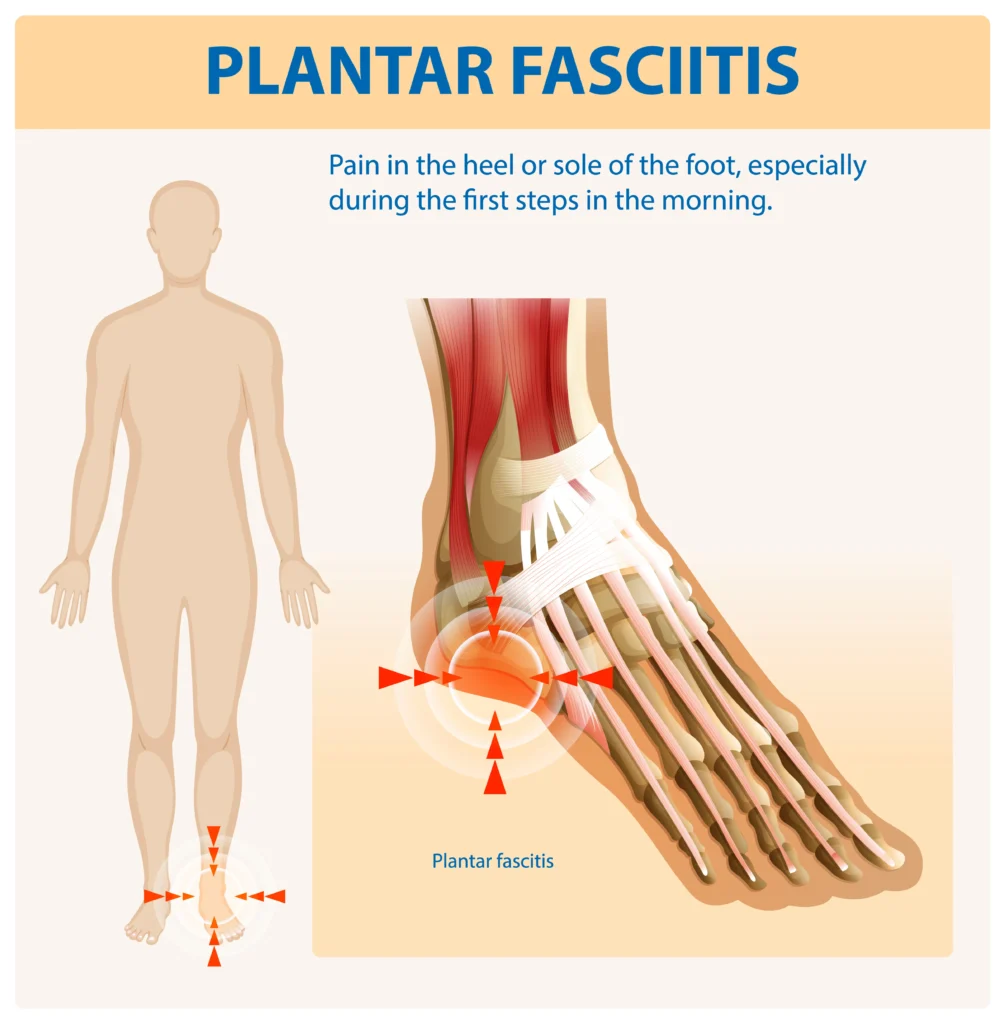
Your feet play a vital role in your overall posture and movement. Issues such as flat feet, high arches, or improper alignment can create a chain reaction, leading to discomfort and pain in your knees, hips, and back. When your feet fail to absorb shock properly, excess strain is placed on other joints, contributing to long-term problems and reducing your overall mobility.
The Impact of Poor Footwear
Poor footwear can contribute significantly to alignment issues and exacerbate existing conditions in your knees, hips, and back. Shoes lacking proper arch support or cushioning can lead to compensatory movements, placing additional strain on your joints. Over time, this improper support may manifest as pain or discomfort, hindering your mobility and overall well-being. Investing in quality footwear is important to maintaining alignment and reducing the risk of injury.
Choosing the Right Shoes for Support
Selecting shoes that offer adequate support is important for preventing musculoskeletal issues. Look for shoes with a cushioned footbed, good arch support, and a stable sole. Avoid overly soft materials that can collapse under pressure. Well-designed footwear will help distribute your weight evenly, maintaining proper alignment and reducing the likelihood of pain or injury in your joints.
The Risks of High Heels and Flat Shoes
High heels and flat shoes can pose significant risks to your musculoskeletal health. High heels shift your weight forward, increasing pressure on your toes and altering your gait, which can lead to knee and back pain. Conversely, flat shoes often lack the support needed for proper alignment, resulting in overpronation and subsequent joint strain. Both shoe types can contribute to discomfort and long-term issues if worn regularly.
High heels elevate your feet, but they often lead to misalignment of the spine and increased pressure on your knees, which can exacerbate pain in the lower back. Studies indicate that wearing heels regularly can increase the risk of osteoarthritis in the knees by up to 25%. On the other hand, flat shoes can fail to provide necessary arch support or shock absorption, often leading to conditions like plantar fasciitis or shin splints. Consistently choosing either option can create an imbalance that negatively impacts your overall posture and joint health.
The Connection Between Feet and Spine Health
Your feet serve as the foundation for your body, influencing the alignment and function of your spine. When your feet don’t provide adequate support, it can lead to compensatory changes up the kinetic chain, affecting posture and spinal health. A misalignment in your feet, be it from overpronation or insufficient arch support, creates a ripple effect, stressing not just your knees and hips, but also your entire back. Understanding this connection is vital for addressing pain and discomfort in these areas.
How Poor Foot Support Affects the Back
Inadequate foot support can disrupt your overall body alignment, leading to improper weight distribution across your joints. When your foot strikes the ground improperly, it doesn’t just impact your knees and hips; the cumulative effect can cause undue stress on the lower back. Tight muscles and altered biomechanics can develop over time due to this imbalance, resulting in chronic back pain and discomfort that may persist without addressing the root cause.
Symptoms of Misalignment
Misalignment in your feet can manifest in various symptoms, including lower back pain, frequent headaches, and postural issues. You may find that you experience discomfort in your hips and knees, even if the pain seems to originate in your feet. This misalignment can lead to muscular imbalances, with some muscles overworking to compensate for others that aren’t functioning effectively, creating a cycle of pain and dysfunction throughout your body.
These symptoms often present subtly at first. You might notice a feeling of stiffness in your back after standing for long periods, or tightness in your hips during certain movements. As the misalignment persists, you may experience sharper back pain, sciatica flare-ups, or radiating pain down your legs. Ignoring these signals can culminate in chronic issues, as your body attempts to adapt to misalignments in your feet, compounding stress on your spine and enhancing discomfort.
Benefits of Orthotics for Joint Health
Orthotics provide significant benefits for joint health by enhancing alignment, stabilizing your feet, and redistributing pressure evenly. With proper support, they can alleviate pain not just in your feet but also in your knees, hips, and back. Many users report improved gait, reduced discomfort during physical activities, and an overall enhancement in their mobility and quality of life. Investing in orthotics may also prevent further joint deterioration, leading to long-term health advantages.
How Orthotics Work to Correct Alignment
Orthotics correct alignment by supporting the foot’s arches and adjusting the position of your foot during movement. This support helps distribute weight evenly and reduces excessive strain on joints, directly influencing your overall posture. With improved alignment, your body operates more efficiently, minimizing compensatory movements that could exacerbate joint pain or lead to injuries.
Choosing the Right Type of Orthotics
Selecting the appropriate type of orthotics involves assessing your individual foot structure, lifestyle, and specific pain areas. Custom orthotics are often designed based on detailed foot assessments, ensuring optimal fit and support. Off-the-shelf options can be effective for general foot issues, but it’s important to consider your unique needs to achieve the best outcomes.
Your journey to finding the right orthotics may include consultations with healthcare professionals such as podiatrists or orthopedic specialists. They can evaluate your foot mechanics through gait analysis, pinpointing specific conditions like flat feet or high arches. Additionally, exploring different materials and designs can help you discover what feels most comfortable and supportive for your lifestyle, whether you’re engaging in sports, standing for long periods, or simply seeking relief from daily activities.
Identifying the Signs of Foot-Related Problems
Recognizing the signs that your feet may be contributing to knee, hip, or back issues is important for maintaining overall health. Symptoms can manifest in various ways, often starting with subtle cues that escalate over time. It’s important to be vigilant about foot comfort and awareness of changes in your body’s alignment, as these can significantly impact your mobility and quality of life.
Recognizing Foot Discomfort
Foot discomfort can present as persistent pain, fatigue, or soreness that doesn’t improve with rest. You may experience discomfort during specific activities, such as walking or standing for extended periods, which might indicate underlying issues like flat feet or high arches. Pay attention to how your shoes fit; ill-fitting footwear can exacerbate these problems and lead to ramifications in your knees and hips.
Observing Changes in Posture
Changes in posture can often be traced back to your feet. If you notice that you’re leaning to one side, slouching, or adjusting how you stand, your foot mechanics may be the culprit. Prolonged discomfort or uneven wear on your shoes can lead to compensatory movements and misalignment. Observing and addressing these signs early can prevent further complications in your musculoskeletal alignment.
When to Seek Professional Help
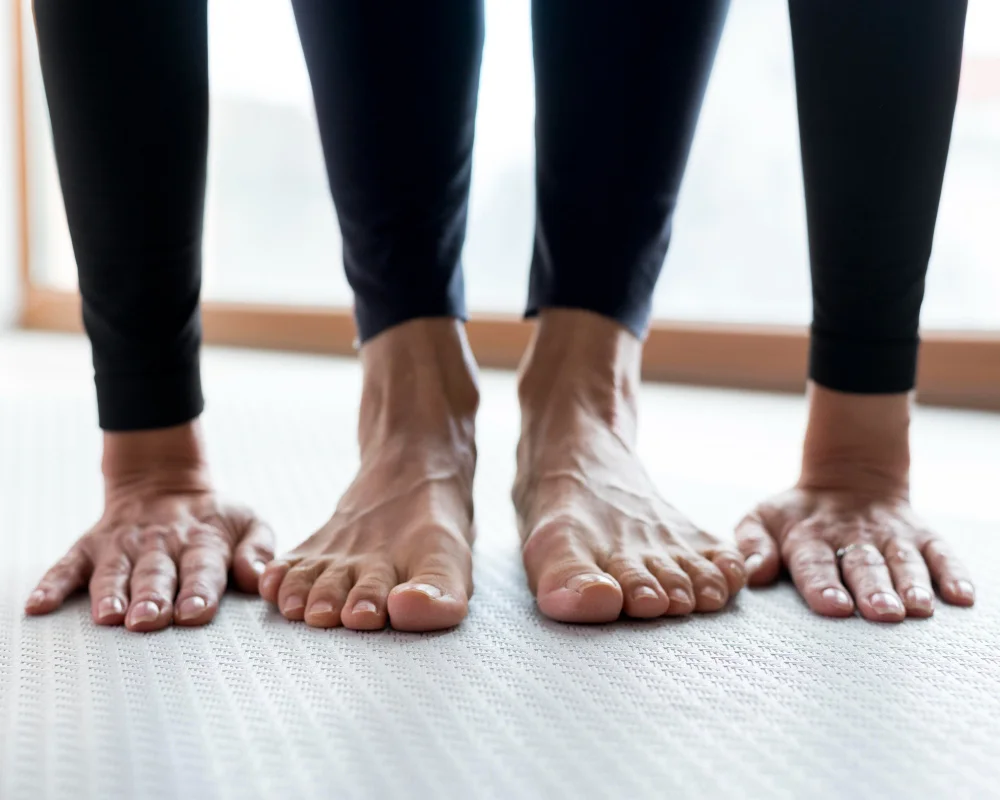
Ignoring foot pain or discomfort can lead to more serious musculoskeletal issues. If you notice persistent pain in your knees, hips, or back that correlates with foot problems, it’s time to consult a orthotics professional. Early intervention can prevent further complications and improve your overall mobility.
Signs You Need a Podiatrist or Orthopedic Specialist
Look for symptoms such as chronic foot pain, swelling, changes in your gait, or persistent discomfort in your knees and hips. If you find that at-home remedies aren’t providing relief, these signs indicate that you should see a podiatrist or orthopedic specialist for a thorough evaluation and tailored treatment options.
Importance of a Comprehensive Foot Assessment
A comprehensive foot assessment provides critical insights into how your feet function and their impact on the entire body. An evaluation includes gait analysis, range of motion testing, and potential imaging studies to identify underlying issues that may be affecting your joints.
This assessment is important because it uncovers biomechanical problems, such as flat feet or high arches, which can lead to improper alignment and ultimately cause pain in your knees, hips, and back. For instance, a study found that individuals with untreated foot deformities are significantly more likely to develop knee arthritis. By understanding your foot health, a specialist can recommend the appropriate orthotics or therapies to address not just the symptoms but the root of the problem.
The Role of Orthotics in Treatment
Orthotics play a pivotal role in correcting foot abnormalities that can lead to knee, hip, and back pain. By providing proper support and alignment, they help redistribute pressure across your feet, which can alleviate discomfort in other areas of your body. Using orthotics consistently can facilitate natural movement patterns and ultimately improve your overall posture and biomechanics.
Types of Orthotics Available
There are several types of orthotics tailored to meet various needs, including:
- Custom-made orthotics for specific foot shapes and conditions
- Over-the-counter orthotic inserts that provide general support
- Soft orthotics for cushioning
- Rigid orthotics for stability
- Heel cups to alleviate heel pain
After understanding your specific requirements, you can select the appropriate type that suits your lifestyle and needs.
| Type of Orthotic | Description |
| Custom-made | Designed specifically based on your foot’s unique structure. |
| Over-the-counter | Generic inserts providing standard support for common issues. |
| Soft | Provides cushioning to relieve pressure during movement. |
| Rigid | Offers stability for severe foot misalignments. |
Benefits of Custom Orthotics
Custom orthotics can significantly enhance comfort and reduce pain by ensuring your feet are properly supported. They can correct biomechanical imbalances and promote healthy foot mechanics, leading to improved overall function of your legs and back.
Additionally, studies have shown that users of custom orthotics often experience substantial relief from chronic pain conditions due to enhanced foot alignment. By closely matching the shape of your foot, custom orthotics can provide targeted support where it matters most, potentially reducing the need for other interventions such as physical therapy or medication. This tailored approach not only helps ease pain but also promotes optimal stability, enabling you to maintain an active lifestyle without limitations.
Integrating Foot Care into Your Routine
Incorporating foot care into your daily regimen can significantly improve your overall joint health. Simple adjustments like regular foot exercises, proper footwear choices, and scheduled foot inspections can make a difference. Setting aside just a few minutes each day for foot care can prevent issues that escalate into severe knee, hip, or back problems.
Exercises for Better Foot Health
Engaging in foot exercises regularly strengthens the muscles that support your arches and improve overall stability. Activities such as toe curls, arch lifts, and ankle rotations enhance flexibility and strengthen the supporting structures, reducing the risk of injury and pain in your lower body.
Final Words For 5 Signs Your Feet Are Messing Up Your Knees, Hips, or Back
Conclusively, if you notice signs such as persistent pain or discomfort in your knees, hips, or back, it may be linked to underlying issues with your feet. Observing these symptoms can indicate that your foot mechanics are contributing to misalignments elsewhere in your body. Consulting a healthcare professional about the potential benefits of orthotics can provide you with the support needed to alleviate discomfort and improve your overall posture. Taking these steps can lead to enhanced mobility and better quality of life.

